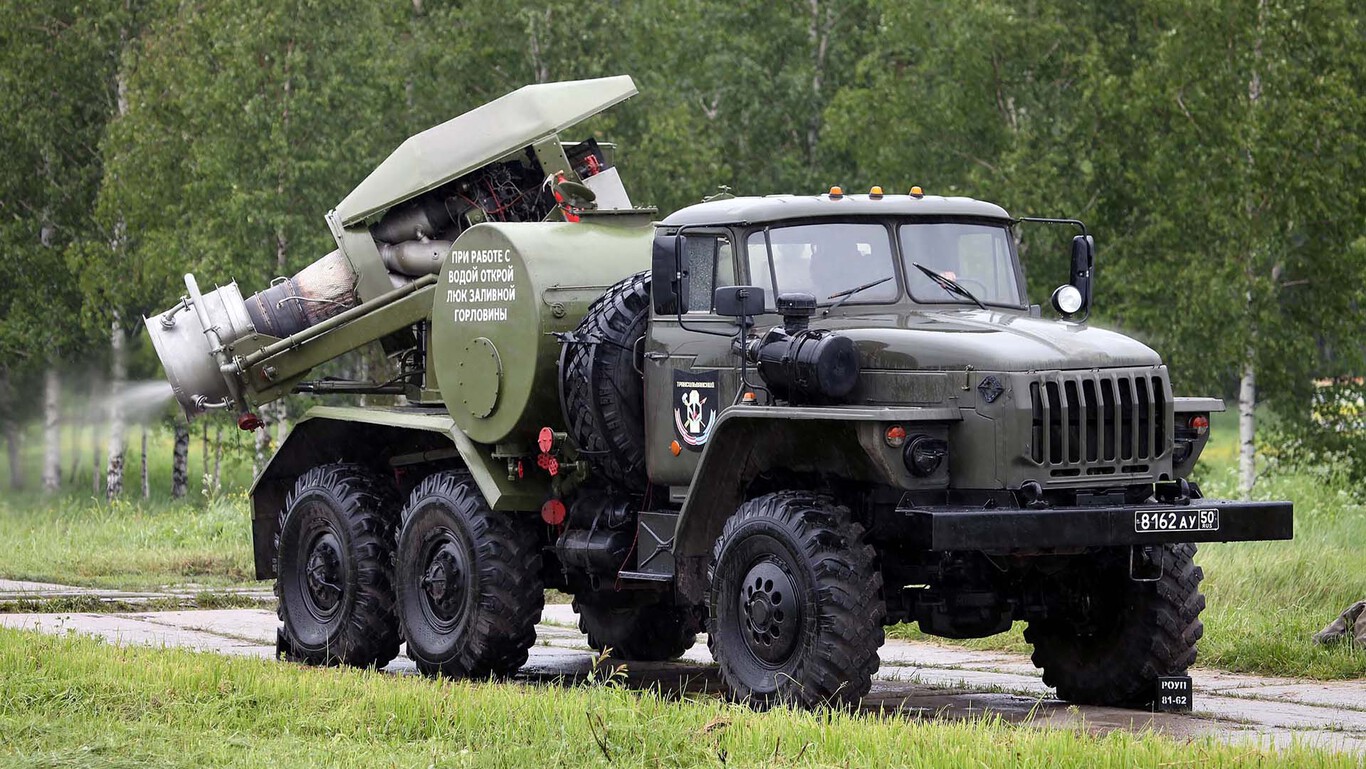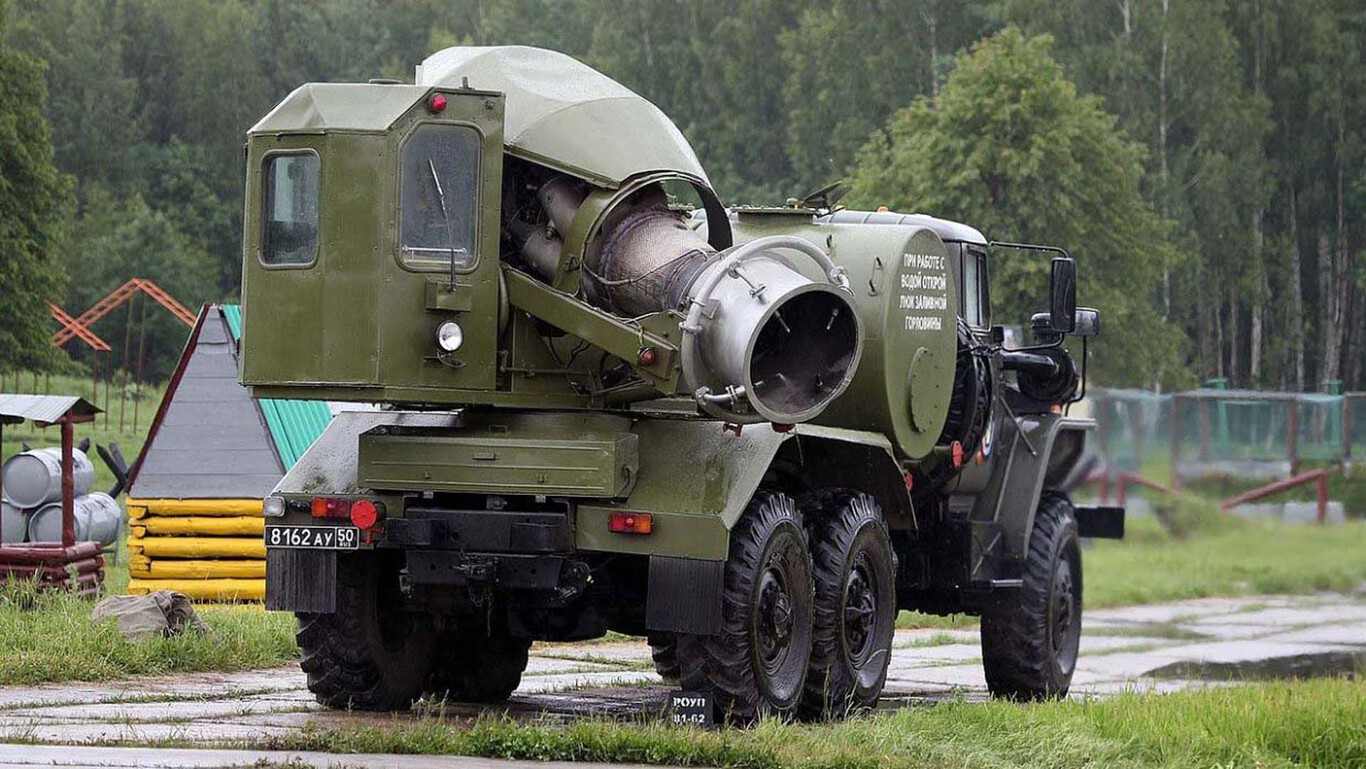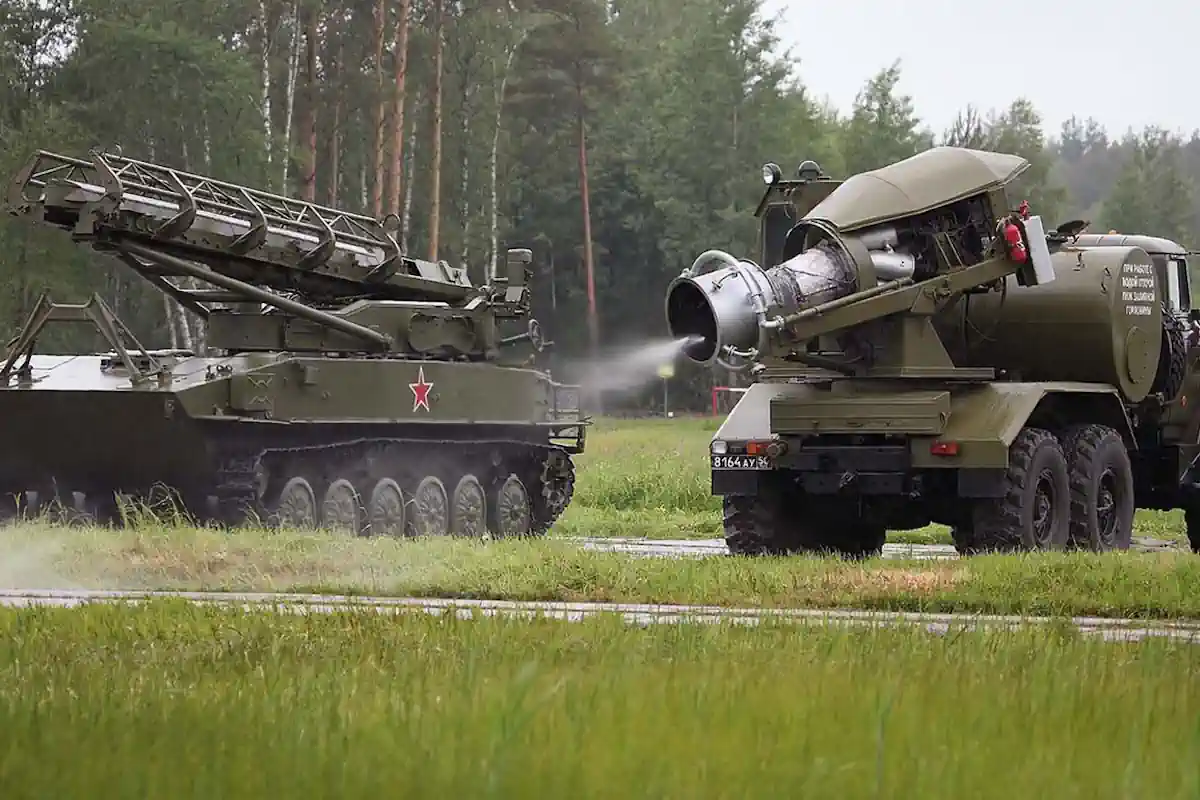You’ve probably been to a pressure wash to clean your car and noticed that the ‘lance’ doesn’t spray water with enough pressure to properly remove all the dirt from the bodywork and windows. In Russia, they don’t have that problem.
The military engineers of the Russian army thought it would be a good idea to give a second life to the jet engines of Soviet fighter jets that were being taken out of service, so they put them in trucks to create a kind of ultra-powerful ‘Karcher’.
It’s just as good for cleaning the deck of an aircraft carrier as it is for clearing snow.
In Russia, they tend to have different ideas. That’s why they do so many things on a grand scale. One example is the TMS-65U, a military truck with a fighter jet engine in the back that has multiple uses, although we could define it as a decontamination machine.
The key to this vehicle is the VK-1 jet engine at the rear. This is a turbojet engine that began production in 1947 and was fitted for decades to the MiG-17 fighter and the Il-28 bomber. When Russia withdrew these Soviet aircraft from service, it decided to give the jet engine a second life.

At the time, the Russian army thought it could be used for decontamination work, but on a large scale, so it was fitted to the rear of one of its most powerful military trucks, the Ural 375 6×6, an extremely tough model that can travel on virtually any terrain and has a large load capacity.
Russia designed a rotating base to install the engine on the truck chassis and also equipped the Ural with a 900-litre fuel tank to power the engine, which in this case would not be used to propel the vehicle, but to “fire” decontamination fluids under pressure, as if it were an ultra-powerful Karcher. The driver drives the truck and a second operator is responsible for operating the jet engine.

There is another variant called the TM-65M, which is based on the Ural-4320 truck, also a 6×6, but with a higher towing capacity. Instead of incorporating the tank that powers the jet engine into the chassis, it tows a tank.
This mass decontamination device has been in operation for several years. It is mainly used to clean military vehicles, such as tanks and other trucks, even if they have been contaminated with chemical agents. There is also a TMS-65U on board the aircraft carrier Admiral Kuznetsov, which is used to clean the deck.
In addition, the TMS-65U can be used to raise large columns of smoke on the battlefield in order to limit the enemy’s visibility. It can also decontaminate large areas of land if they have been sprayed with chemical agents.
Another use for this device is as a snowplough. Using its ability to shoot liquid at high pressure, it can quickly clear roads, railway tracks, airport runways and even aircraft.

